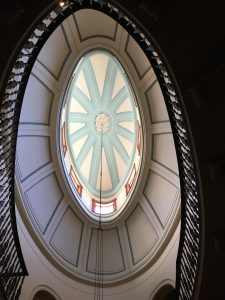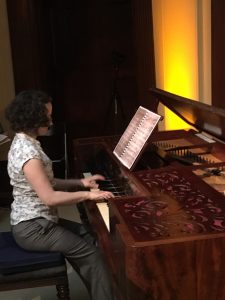Sound Heritage down under
Jeanice Brooks reports on the latest Sound Heritage venture:

I’ve just returned from a wonderful symposium at Elizabeth Bay House in Sydney, organised by Dr Matthew Stephens of Sydney Living Museums. Matthew is the research librarian of SLM’s Caroline Simpson Library and Research Collection, and he has been the international member representing Australia at the study days held by the Sound Heritage network in the UK over the past two years. Sound Heritage brings together academic music historians, performance practice experts, and heritage professionals together to collaborate on research and interpretation. We held three study days in 2015-16, and one of the big discoveries for me at these events was finding out just how much fascinating work has been going on in Australian heritage sites.
Sydney Living Museums, in particular, has become an important leader in the field of sound heritage, with a range of innovative projects highlighting the music of the historic places in its portfolio. Music making at the houses of the colonial-era elite is evoked through projects at Vaucluse House and Elizabeth Bay House, while remnants of convict music have been discovered in Hyde Park Barracks. SLM holds a rich collection of sheet music and binder’s volumes, including the earliest known example of a binder’s volume compiled and bound in Australia. Made for a young Sydney couple in the 1830s, the Dowling Songbook has been the subject of a project in collaboration with the historical performance programme at the Sydney Conservatorium.

I had been following all these projects online, so it was very exciting to visit some of the places I had been hearing about and to meet some of the people working there. (It also didn’t hurt that the weather was sunny and temperatures balmy, and that Elizabeth Bay House has spectacular views over the water.) On the day after I arrived in Sydney, a few of us presented a mini-version of the symposium for a curatorial forum of Sydney Living Museums staff. This was a particularly good opportunity to engage with the city’s heritage sector professionals in advance of the bigger event the following day.
The symposium itself was a full-day event, and the audience drew participants from every state in Australia and from as far away as New Zealand. I was honoured to start the day with the keynote talk. This gave me the opportunity to introduce the wider Sound Heritage project to an enthusiastic new audience, and to highlight both existing work (for example, at Tatton Park) and new initiatives (such as the recently unveiled Tudor soundscape at The Vyne).


Other presentations ranged widely, taking in both historical research and interpretation experiments. Graeme Skinner provided a fascinating look at reciprocal musical relations between indigenous peoples and European colonists in his presentation on “Curating the Colonial Musical Museum,” while Brianna Robertson-Kirkland from the University of Glasgow reported on her research on Scottish music in early colonial music collections. Dance on both sides of the globe and in radically different contexts featured in presentations by Southampton’s Katrina Faulds (on dance and dance music in English country houses) and by Heather Clarke (on the culture of convict dance in Australia). Matthew Stephens and Jennifer Gall described historical music projects at SLM and ACT Historic Places, while Genevieve Lacey provided a vivid and moving introduction to a beautiful installation – Pleasure Garden – that premiered at SLM’s Vaucluse House. The day was punctuated with performance – from the lunchtime concert introducing Nicole Forsyth’s work on the sounds and music collections of Rouse Hill Estate, to the evening concert “Here and There: Music At Home in Sydney and London, 1830-1845” featuring tenor James Doig, soprano Nyssa Milligan, and pianist Katrina Faulds.
It was a really stimulating and lively day, and the atmosphere was nicely captured in a wonderful blog on the event by the music critic Harriet Cunningham. She described the Sound Heritage network as made up of “people-who-know-stuff, people-who-do-stuff, and people-who-look-after-stuff getting together to bring heritage sites to life” – which is probably the most accurate description of what we have been trying to do that I have seen so far.

